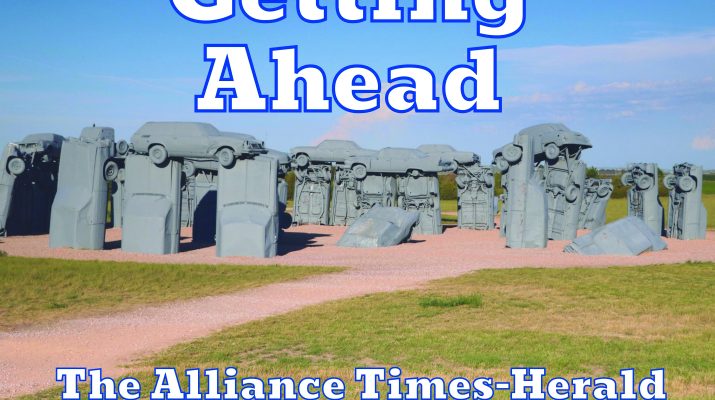We recently received our invitation to the RSVP (Retired Senior Volunteer Program) banquet on May 6. Celebrating 50 years in Alliance, they are asking everyone to wear clothes from the 70s. The 70s was a decade when I was in high school, in college, and started my first teaching job at Alliance High School. I know all about the fashion of the decade. Just about everything was in style at some point.
The late 60s and early 70s were the mini skirt years. We were all skinny teenagers with great legs, so mid-thigh skirts were okay with us. Parents and schools were less supportive. Around 1970 culottes became the big fashion trend. They were a great cross between skirts and shorts, and a whole lot easier to sit in. Our parents gladly bought them when we did our back-to-school shopping.
However, they violated school dress codes. Girls had to wear dresses or skirts every day and got sent home to change when our clothes were unacceptable for any reason. The culotte wars were on. Culotte designs changed to look like pleated skirts. Still not okay. Then they had fabric flaps over the front and back so they looked like skirts. Still not okay. I had a favorite orange culotte dress. The back was seamed all the way down, but it was still a split skirt, pleated in front. I usually got by with that. There were days when a dozen girls in our high school of 200 were sent home.
While I think dress codes have their place in schools, they often go too far. They tend to discriminate against girls, minorities, marginalized kids, and kids who live in poverty. I had a student whose only coat advertised Marlboro, and he wore it not only to school but to classes as well. We teachers had enough sense to ignore it, knowing his family couldn’t afford anything else. But another student pushed it to the principal, and the coat was banned. How humiliating.
Schools should ban clothing that is racist or profane, and they should be able to say, “Wear clothes that are appropriate.” I know this puts an extra burden on principals, but it avoids nonsense like the culotte wars of my high school years.
What finally changed our school’s dress code? The elementary teachers rebelled. They had recess duty. They sat on the floor with kids. One day they started wearing pantsuits. The superintendent gave in, so the women teaching higher grades demanded the same right. Eventually, my junior year, even we girls in high school got to wear dress slacks to classes. And culottes.
When I got my invitation for RSVP, I pulled out my box of old patterns, as I sewed a lot of my own clothes. The memories of the outfits I made brought many smiles. My culotte pattern was a Marlo Thomas design.
I wore a lot of dresses – bright colors, floral prints, geometric designs. Shirts had bell sleeves, embroidered designs, peasant or cowl necklines. They might be smock tops or halter tops or tied at the waist. We wore ponchos and crocheted vests. Pants and jeans were bell bottoms or high-waisted with wide legs. Plaids were huge. Elephant bells were obnoxiously hard to walk in, as they kept wrapping around ankles, so I never bought a second pair. Polyester ruled, and Disco brought shiny new fabrics like Qiana and fake suede.
Our shoes: knee-high boots, chunky heels, platform soles, Birkenstocks, Earth shoes, Chuck Taylors. My favorite was a pair of huaraches with wedge heels.
By the time I moved to Alliance, the dress length normalized at below the knee. Clothes were professional. I wore lots of dresses and pantsuits to work in the late 70s.
What wasn’t ever in style? Tight pants. Anything that looked worn out, with holes or frayed edges. During that entire decade I owned nothing black.
I’ve hit the Mission Store and the Collection Basket. 70s clothes choices were pretty slim. I did find a couple of possibilities, but no culottes. It’ll be great fun to see what everyone comes up with as we celebrate RSVP’s 50th Anniversary!

